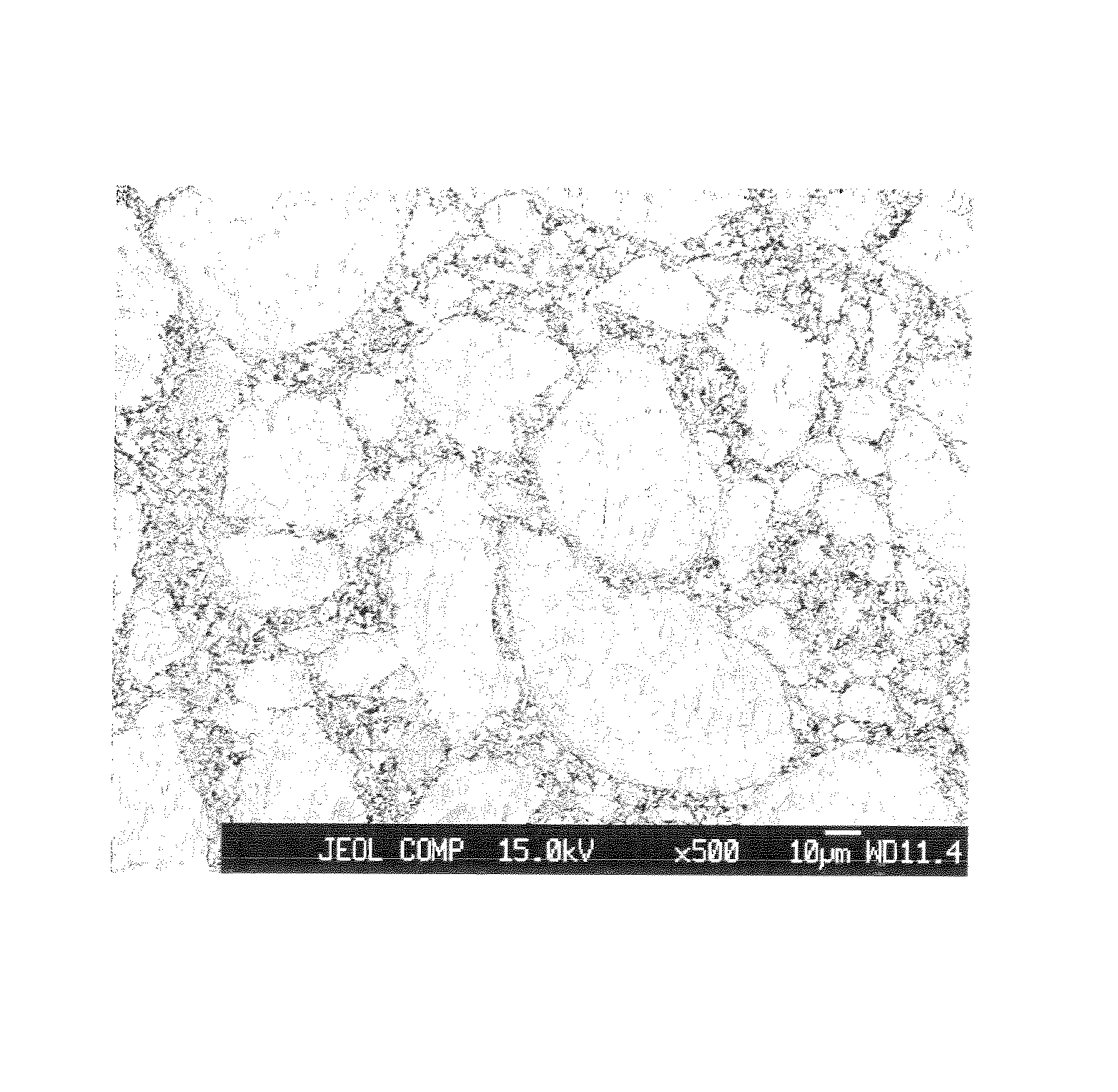Sb-Te base alloy sinter sputtering target
a technology of te base alloy and sputtering target, which is applied in the manufacture of optical record carriers, diaphragms, and record information storage. it can solve the problems of deteriorating the quality of the thin film as the recording medium, cracks or fractures in the target, and affecting the quality of the recording medium. it achieves the effect of increasing the electrical resistance of the phase change recording layer and effectively inhibiting
- Summary
- Abstract
- Description
- Claims
- Application Information
AI Technical Summary
Benefits of technology
Problems solved by technology
Method used
Image
Examples
example 1
[0059]Ag, In, Sb and Te powder raw materials each having a purity of 4N or higher excluding gas components were mixed and synthesized to achieve an Ag5In5Sb70Te20 alloy, and this was subject to machine pulverization in an inert atmosphere. Consequently, as shown in Table 1, powder having an average grain size (X) of 8.0 μm was obtained.
[0060]Subsequently, this was divided into the four types of (1), (2), (3) and (4), and each of the four types of powders was mixed with 5 at % of the carbon powders having the average particle sizes (Y) of 30 nm, 50 nm, 7 nm and 750 nm respectively, as shown in Table 1, and then hot pressed. Each of the obtained sintered compact was subject to machining, and additionally subject to polishing to obtain an Ag5In5Sb70Te20 alloy target containing a prescribed amount of carbon.
[0061]The obtained alloy target comprised a structure in which the Sb—Te base alloy particles were surrounded by fine carbon particles. Table 1 shows the ratio of Y / X and the density...
example 2
[0066]Ge22.2Sb22.2Te55.6 alloy raw material was injected at 780° C. with a gas atomization device using argon (100 kgf / cm2) as the injection gas to prepare atomized powder. Consequently, fair spherical powder was obtained.
[0067]From this gas atomized powder, as shown in Table 2, powder having an average grain size (X) of 32.0 μm was obtained. Subsequently, this was divided into the four types of (1), (2), (3) and (4), and each of the four types of powders was mixed with 5 at % of the carbon powders having the average particle sizes (Y) of 30 nm, 50 nm, 7 nm and 750 nm respectively, as shown in Table 2, and then hot pressed.
[0068]Each of the obtained sintered compact was subject to machining, and additionally subject to polishing to obtain a Ge22.2Sb22.2Te55.6 alloy target containing a prescribed amount of carbon. Table 2 shows the ratio of Y / X and the density.
[0069]The SEM photograph of the obtained target surface is shown in FIG. 1. As shown in FIG. 1, no defects such as cracks can...
PUM
| Property | Measurement | Unit |
|---|---|---|
| mean diameter | aaaaa | aaaaa |
| mean diameter | aaaaa | aaaaa |
| diameter | aaaaa | aaaaa |
Abstract
Description
Claims
Application Information
 Login to View More
Login to View More - R&D
- Intellectual Property
- Life Sciences
- Materials
- Tech Scout
- Unparalleled Data Quality
- Higher Quality Content
- 60% Fewer Hallucinations
Browse by: Latest US Patents, China's latest patents, Technical Efficacy Thesaurus, Application Domain, Technology Topic, Popular Technical Reports.
© 2025 PatSnap. All rights reserved.Legal|Privacy policy|Modern Slavery Act Transparency Statement|Sitemap|About US| Contact US: help@patsnap.com


